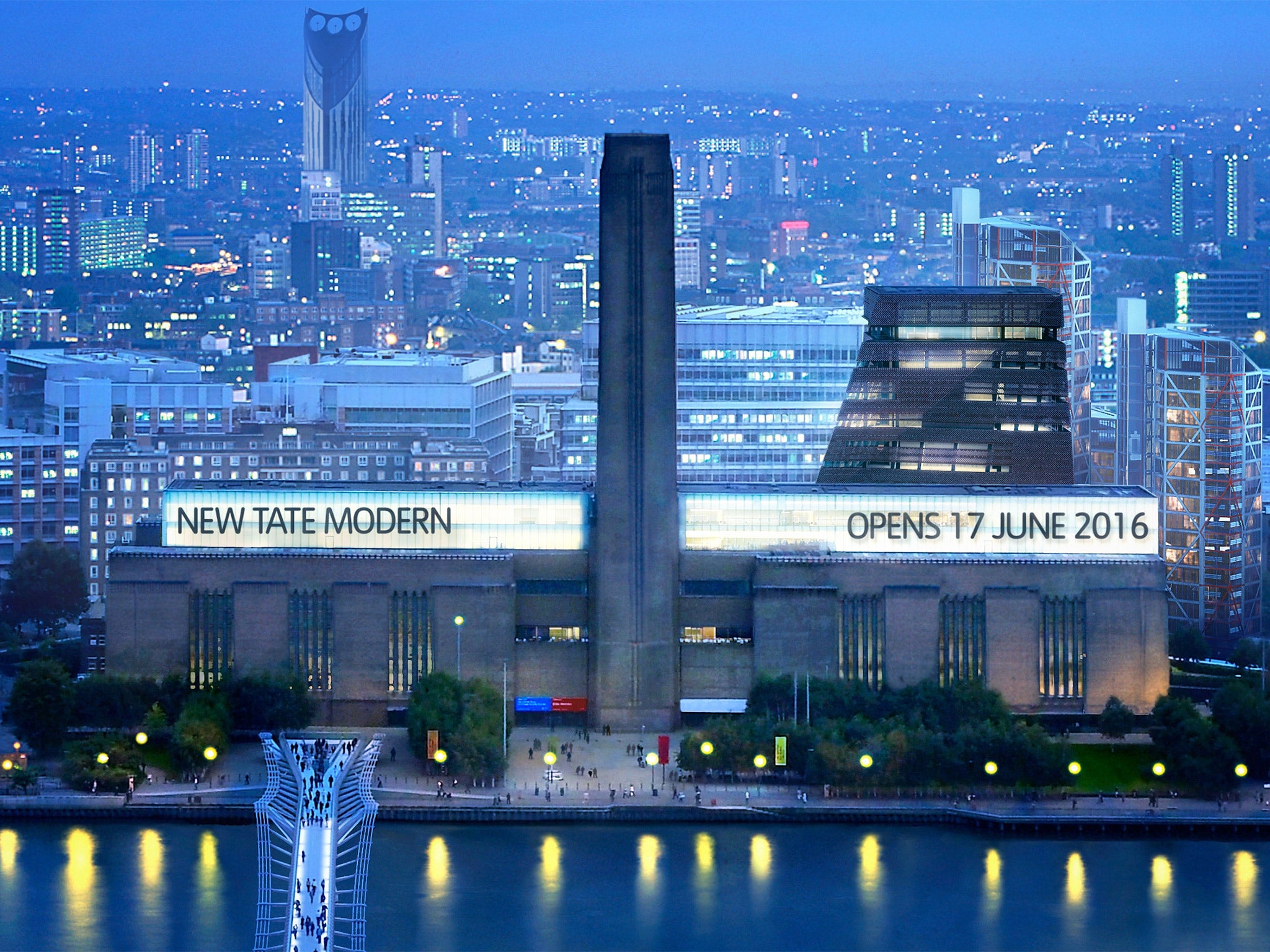Tate Modern to open 'reimagined version of the museum' with new 10-storey extension
The new building will offer 60 per cent more display space and more room for 'social interaction and experience'

Your support helps us to tell the story
From reproductive rights to climate change to Big Tech, The Independent is on the ground when the story is developing. Whether it's investigating the financials of Elon Musk's pro-Trump PAC or producing our latest documentary, 'The A Word', which shines a light on the American women fighting for reproductive rights, we know how important it is to parse out the facts from the messaging.
At such a critical moment in US history, we need reporters on the ground. Your donation allows us to keep sending journalists to speak to both sides of the story.
The Independent is trusted by Americans across the entire political spectrum. And unlike many other quality news outlets, we choose not to lock Americans out of our reporting and analysis with paywalls. We believe quality journalism should be available to everyone, paid for by those who can afford it.
Your support makes all the difference.Tate Modern transformed the UK’s attitude to modern art, according to director Sir Nicholas Serota. The gallery is set to transform attitudes again with a “reimagined version of the museum” that opens next summer with a new 10-storey extension.
Sir Nicholas, head of Tate, has announced that the new gallery would open to the public on 17 June with the new building, called the Switch House, offering 60 per cent more display space as well as more room for “social interaction and experience”.
The new building on the south side of the museum was designed by architects Herzog & de Meuron who converted the original power station into Tate Modern, and aims to offer “different kinds of spaces” following public demand, the director said.
Chris Dercon, the outgoing director of Tate Modern, said the public wanted more from museums in the 21st century adding: “They are demanding something different”.
Alongside the space given to the gallery’s international collection “there will be as much space for people to meet up, exchange ideas and participate in live action,” he said. “Indeed an entirely different museum. We are not the only ones but we are the first ones in the world to take it that far.”
Tate Modern surpassed visitor expectations when it opened at the turn of the century. Tate’s management had expected 2 million visitors a year, but on average visitor numbers have been more than 5 million. In 2014 to 2015 a record 5.7 million people visited.
“Tate Modern has been a catalyst for change in the UK’s attitude to art,” Sir Nicholas said. “It has helped transform the public’s relationship with contemporary and modern art.”
The total cost of the building project is estimated to be £260m with the gallery still looking to raise the last £30m. A decade ago the new building was projected at £215m, but renovation work on the existing building - now called the Boiler House – inflated the cost.
Tate Modern occupies the former site of Bankside Power Station, which was designed by Giles Gilbert Scott and completed in 1961. It was decommissioned 20 years later and fell into disrepair. The gallery not only proved a huge success but helped revitalise the entire area on the south bank of the Thames.
Sir Nicholas said: “The concept of the museum is in constant evolution and is driven forward by a combination of artistic innovation, the demands of the audience and the curatorial vision.”
The Switch House will mirror the Boiler House’s three levels of galleries and include learning spaces, a members room, restaurant and a viewing platform on the 10th floor.
Sir Nicholas said: “The way in which we run Tate Modern will further change expectations of what museums and galleries can do. I think it’s changing all the time… Tate Modern is at the forefront of those changes.”
Join our commenting forum
Join thought-provoking conversations, follow other Independent readers and see their replies
Comments